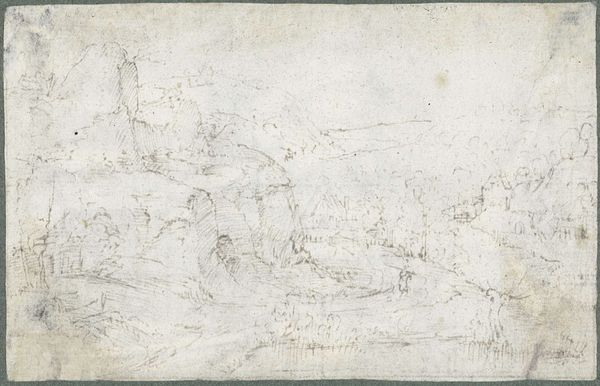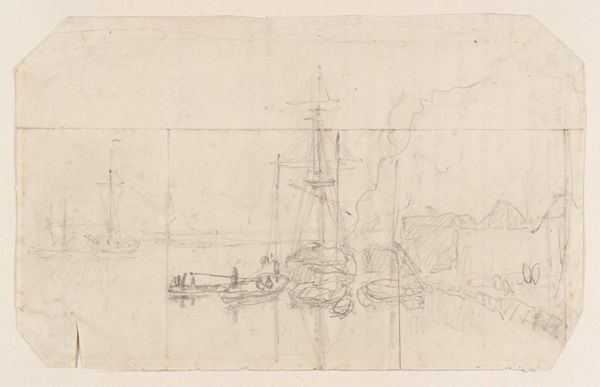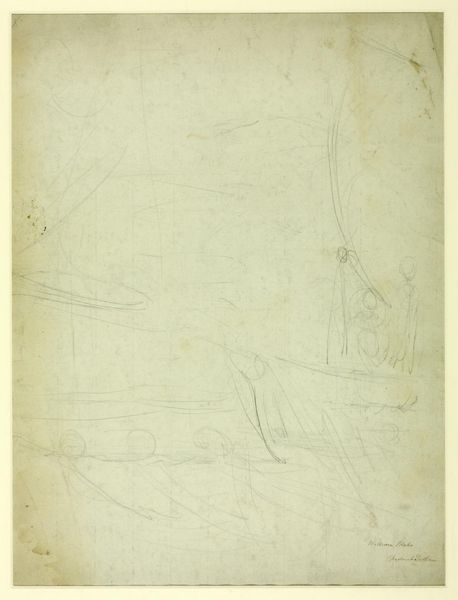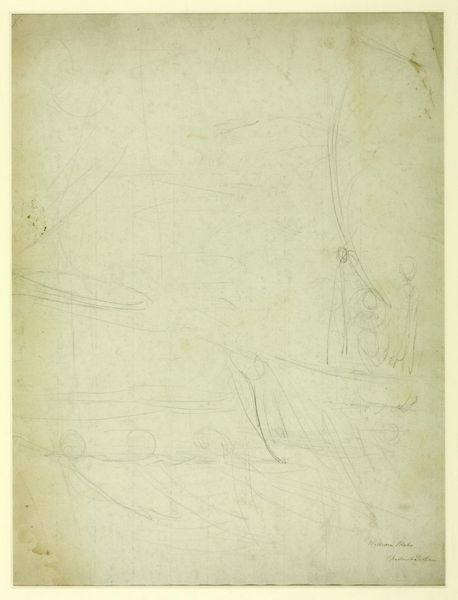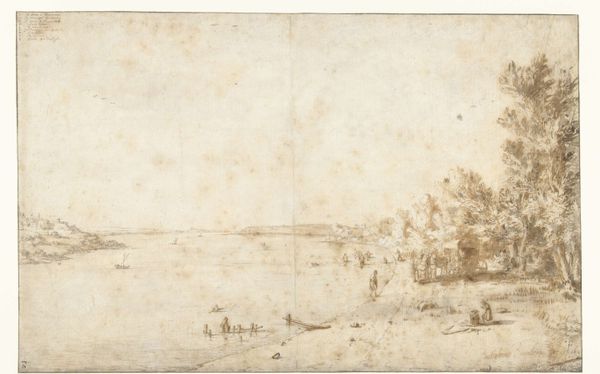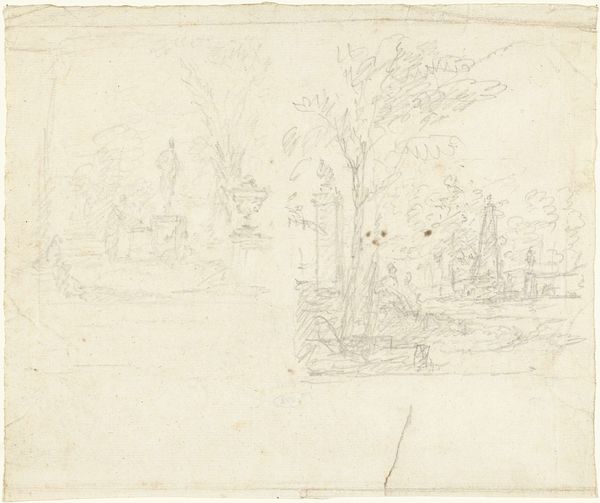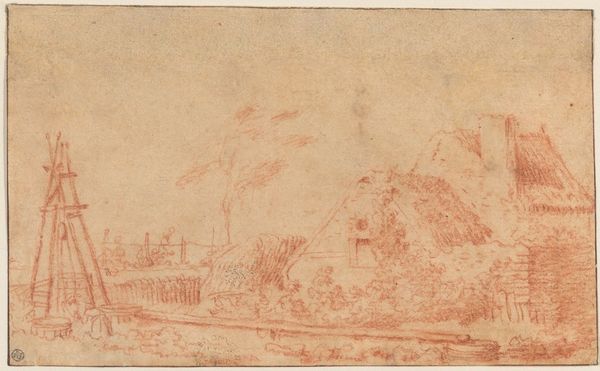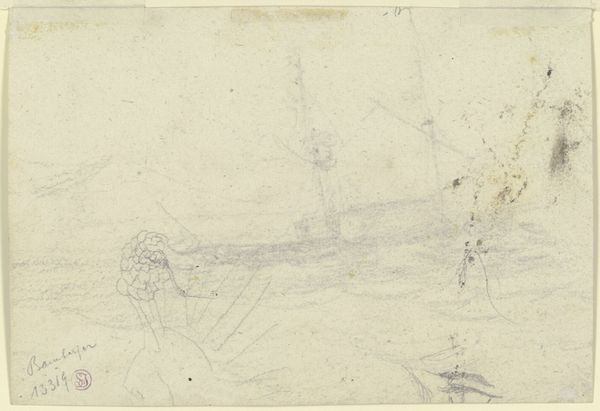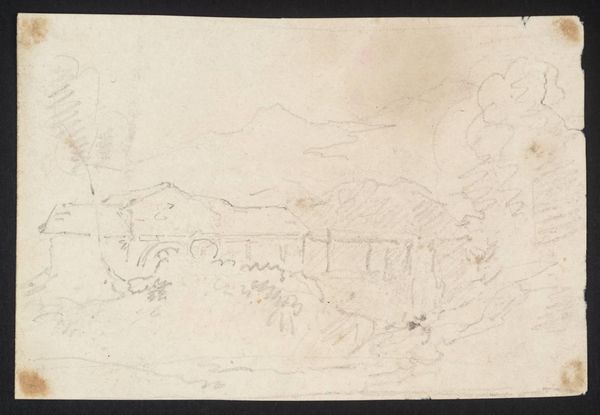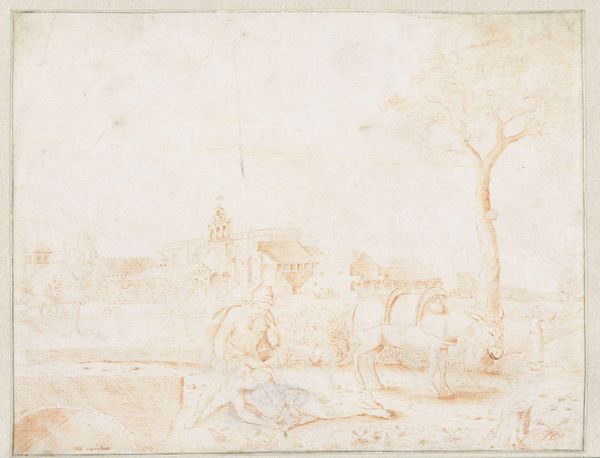
drawing, pencil
#
drawing
#
dutch-golden-age
#
pencil sketch
#
landscape
#
pencil
#
realism
Dimensions: height 102 mm, width 152 mm
Copyright: Rijks Museum: Open Domain
Editor: Here we have a 17th-century pencil drawing titled "De raderen van een watermolen" – "The watermill wheels." It is attributed to an anonymous artist and housed in the Rijksmuseum. It seems like a quick sketch, and I'm intrigued by its bare simplicity, showing the labor implied by this machine. What jumps out at you? Curator: Immediately, I'm drawn to the overt display of process. It’s not a polished painting meant to showcase a finished product, but a study focused on the mechanics, on the very tools that powered the 17th-century Dutch economy. How was paper produced? How were pencils sourced and crafted? We are encouraged to consider labor – whose hand sketched this, and who relied on the watermill's output? Editor: That's fascinating. I hadn't considered the implications of the drawing materials themselves. Do you think this focus on process diminishes its artistic value in any way? Curator: Not at all. Instead, it challenges the traditional art historical hierarchy. We often prioritize paintings over sketches, the finished over the preparatory. But this drawing encourages us to look beyond that, to examine the often-overlooked steps involved in material production. Who decides that drawing is only preliminary, when it provides such a deep insight into the nuts and bolts of both the watermill and society itself? Editor: So it’s more about understanding the broader context, the making and consuming... Curator: Exactly! Consider the socio-economic structure surrounding both the drawing and the mill: who benefited, who labored? Examining its materiality expands the way we can appreciate and interpret this artwork. Editor: I see. Looking at it from a materialist perspective reveals layers I would have missed otherwise. Curator: Precisely! Considering materials encourages us to investigate an artwork and consider who made the sketch and, even more broadly, who supported its construction and ongoing usage.
Comments
No comments
Be the first to comment and join the conversation on the ultimate creative platform.
